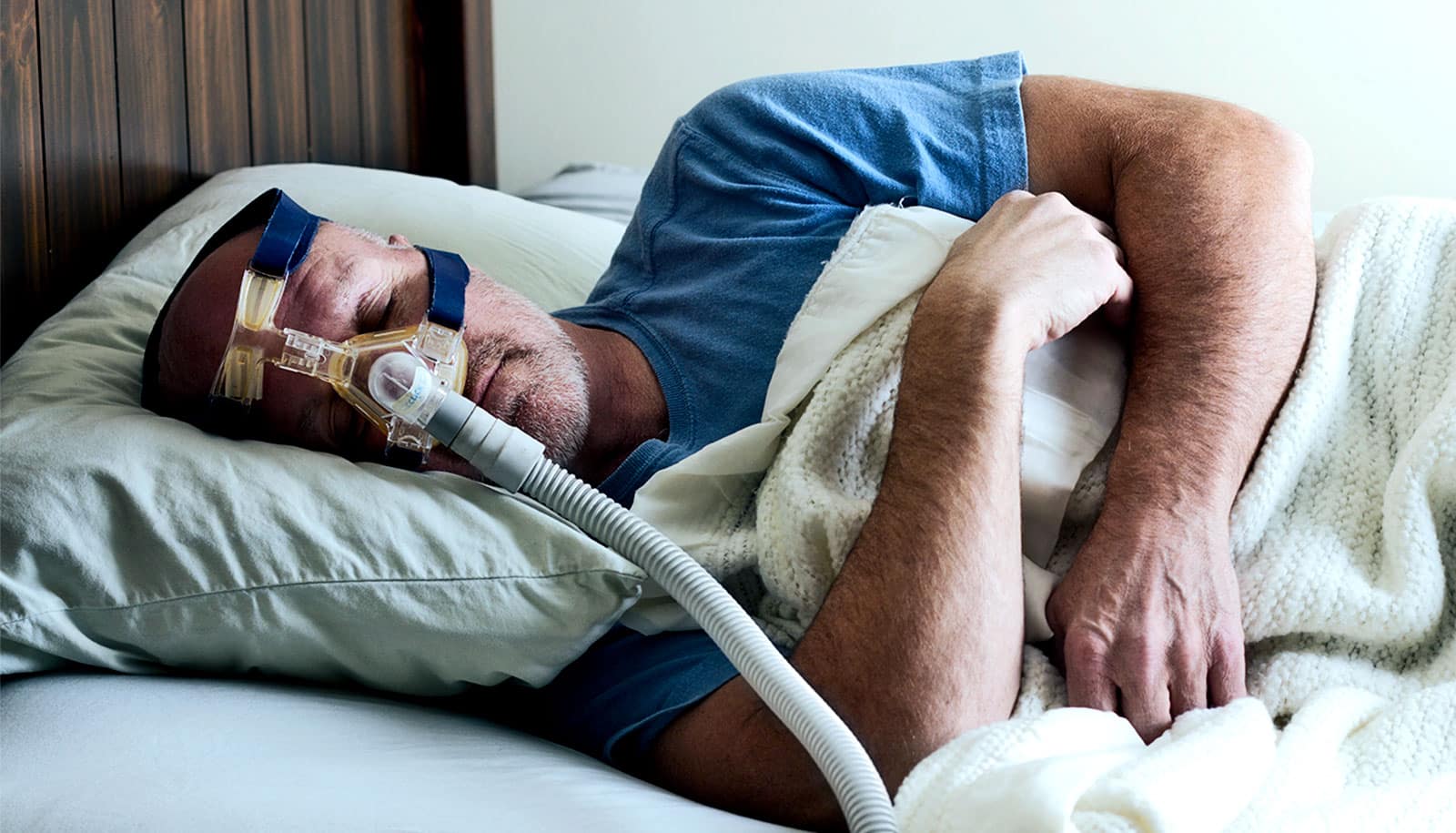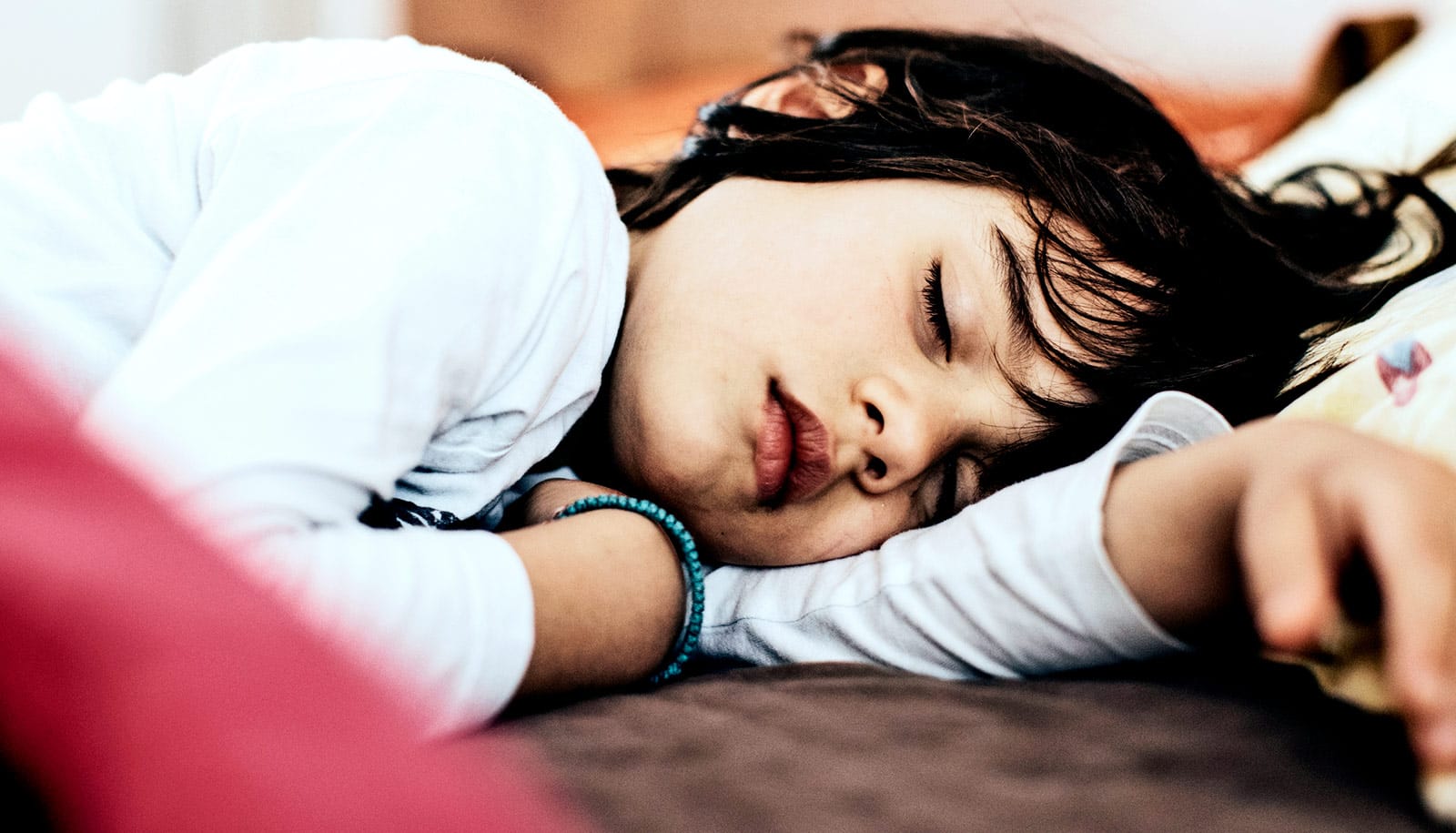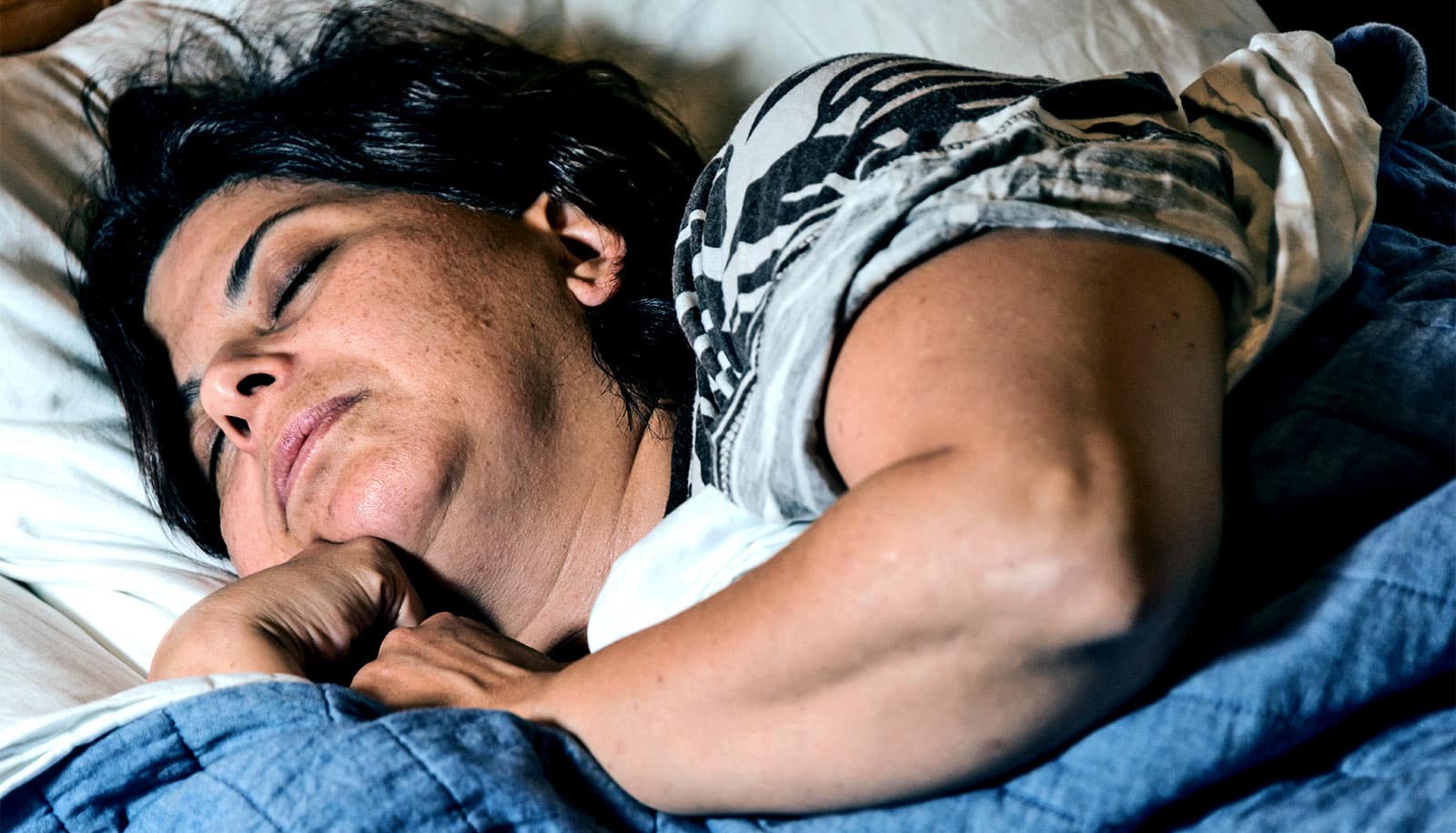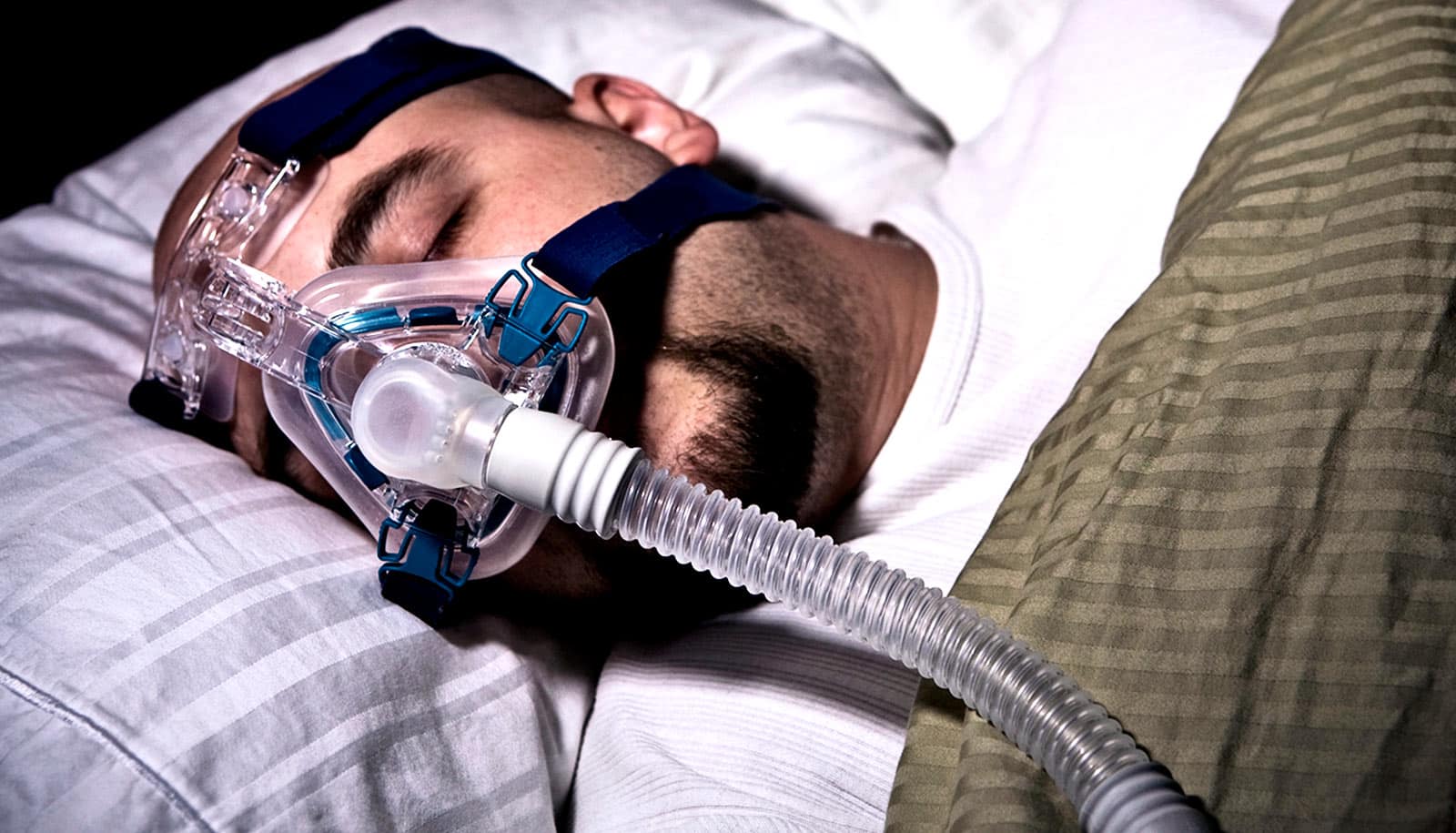Using a continuous positive air pressure machine is a common way to treat obstructive sleep apnea. But there is growing confusion among many people about whether or not they should use one.
High on the list of sounds no one wants to hear is the snoring of a bed partner. But sometimes that harsh, rasping sound is more than just annoying; it can be life-threatening.
About half of the 90 million Americans who snore have obstructive sleep apnea (OSA), a condition that actually disrupts breathing, is linked to heart disease, and can even be fatal. Even more troubling, it’s possible to have the condition and not even know it.
Perhaps unsurprisingly, many people avoid seeking help for snoring because they don’t think it’s a big deal. Or they do, but don’t want to undergo a sleep test in an overnight lab (which is how OSA is typically diagnosed). Or they’re worried they’ll be diagnosed with OSA and have to use CPAP, the most common, and notoriously difficult to tolerate, treatment.
A recent recall of one company’s device has added to public confusion. To clear things up, Henry Yaggi, a pulmonologist and director of the Yale University Center for Sleep Medicine, and Andrey Zinchuk, who directs an Advanced Apnea Management Program at Yale, put together seven things you need to know about obstructive sleep apnea, advances in CPAPs, and other OSA treatments:
1. Obstructive sleep apnea—defined
Obstructive sleep apnea is the most common form of sleep apnea, a disorder in which your breathing during sleep repeatedly stops and starts. There is also central apnea, when the brain doesn’t regulate breathing properly, and mixed apnea, a combination of obstructive and central apneas.
OSA causes the muscles in the back of your throat to relax when you’re sleeping, to the point where they can narrow or close your throat. You may snore, snort, or make other noises in your sleep as you try to breathe. The resulting loss of air can reduce your blood oxygen level, leading your brain to send a signal to rouse you.
Whether or not they are aware of it, some people with OSA experience hundreds of episodes of stopped or interrupted breathing each night, and this can have severe impacts on their quality of life in the daytime.
2. There have there been improvements to CPAP machines
A little background. The CPAP machine, considered the “gold standard” of sleep apnea treatment, is designed to regulate breathing during sleep. However, it is notoriously perceived to be unpleasant and, thus, doesn’t work for some people.
A CPAP machine is about the size of a tissue box, has a motor, and is attached by a tube to a mask worn over your nose and mouth. The machine gently blows air through the tube and then into your airways through a mask while you sleep—a sleep technologist can adjust the machine to make sure the mask fits properly and the right amount of air goes through. “There are as many masks as there are shoes, and we can usually find the right one for each person,” Zinchuk says.
Yaggi and Zinchuk agree that today’s CPAPs are “improved,” with more comfortable masks, and such features as automatic pressure adjustment capabilities, built-in modems that transmit data to the doctor, and bi-directional capabilities that allow technologists to make remote adjustments. But, “it’s still essentially the same device. We’re trying to eliminate things that make people stop using it. But the fundamental principle is still the same,” Zinchuk says.
3. Putting the recent CPAP recall in context
One thing that may be top-of-mind for people is the recent recall of some CPAP devices. In June 2021, one CPAP manufacturer, Phillips Respironics, voluntarily recalled certain ventilators, BiPAP, and CPAP machines because of potential health risks.
According to the Food and Drug Administration (FDA), the polyester-based polyurethane foam used in these devices to reduce sound and vibration can break down. If this occurs, black pieces of foam, or certain chemicals that are not visible, could be breathed in or swallowed by the person using the device. These issues could potentially result in serious injury, which can be life-threatening and require medical intervention to prevent permanent injury.
“But although these particles may also have toxic or carcinogenic effects, testing results suggest that emissions taper off during the initial use of the device—so, the actual risk is not known,” Zinchuk says.
This may leave some wondering how to do their own risk calculus. As the FDA points out, for some patients, stopping use of the recalled or repaired device may involve greater risk than continuing its use.
“Many people may not need to stop using their Respironics device, especially those [with serious conditions] who use ventilators at home to sustain life or people with severe sleep apnea and symptoms,” Zinchuk explains.
It’s best to speak to your sleep provider to discuss risks and benefits of continuing or stopping CPAP therapy. The FDA has a list of frequently asked questions regarding the recall, and Philips also has a toll-free phone number, 877-907-7508, with a Spanish-language option available.
4. There are available treatments other than CPAP
There is good news, especially for those who don’t tolerate the CPAP machine: There have been improvements to other sleep apnea treatments—and they may work better for some patients (which a sleep study can help determine), according to Yaggi and Zinchuk.
- Lifestyle changes are the first line of defense for mild cases of OSA. That can include cutting back on or avoiding alcohol, losing weight, and quitting smoking.
- Oral appliances, which are devices placed in your mouth to keep the airways open, may be prescribed. They look like a retainer and work by advancing the jaw. When the person wearing them lies down, their tongue and other tissues will not fall back into the airway.
- Performing upper airway exercises can strengthen weak muscles (such as those in the tongue and throat) that cause sleep apnea in people and over time eliminate the need for a CPAP machine in some patients. Think of it as physical therapy for the respiratory system.
- Sleeping on your side or stomach instead of on your back can improve breathing during sleep. A variety of devices are available to help maintain a safe position.
- Surgery, including common procedures to the nose, tongue, or palate (the soft tissue in the back of your mouth and throat) may help. One promising CPAP alternative is the surgical implantation of a pacemaker-sized device called the hypoglossal nerve stimulator (brand name: INSPIRE therapy). The device requires two incisions, one in the neck, below the jaw line, and another on the right chest wall. One electrode is attached to the section of the hypoglossal nerve that controls the forward movement of the tongue, and another is placed in between the rib muscles; the electrodes are connected to a generator. The device monitors breathing and stimulates the hypoglossal nerve. This helps the upper airway muscles keep the airway open. No mask is needed.
5. It’s now possible to do sleep studies from home
Up until a few years ago, it was standard for a doctor to recommend sleep tests in overnight labs for suspected sleep apnea. Patients would pack their night clothes and go to a lab as they would to a hotel, except that they would go to bed with sensors attached to their bodies. As they slept, technologists would collect data, including breathing, heart, and brain wave activity. (Overnight laboratories are still important for people who have additional problems, such as heart or lung disease, that may need special monitoring.)
But now, especially since the start of the pandemic, more people are taking their sleep tests at home. The equipment is less cumbersome—it’s portable, stored in a small case containing a scaled-down version of the in-lab test. It includes a piece of equipment the size of your cell phone that has sensors, a small data collection unit, and instructions.
Patients can do the sleep test in their own bedrooms. “The home test has been a nice tool to have during the COVID-19 pandemic,” Zinchuk says. “We notice a lot more people are willing to do sleep tests this way.”
The home test measures oxygen saturation, heart rate, respiratory effort, and airflow (through nasal prongs), as well as time spent on your back or side while sleeping, says Zinchuk. “That gives us enough information to diagnose over 70% of patients with sleep apnea.”
“Home tests” have been used for hospitalized patients who are sick with an illness in addition to suspected sleep apnea. This enables them to make a diagnosis right away, rather than waiting for hospital discharge and an in-lab sleep study once they get home, Zinchuk says.
6. A precision medicine approach to diagnosing obstructive sleep apnea
Obstructive sleep apnea is not always a simple diagnosis. Machine learning techniques, or “cluster analytics,” are used to identify patterns important to your health, Yaggi says. For instance, your data may indicate you are at high risk for developing heart problems associated with sleep apnea.
All of this is a shift from previous years, when sleep apnea was diagnosed as mild, moderate, or severe based on a single measure called the apnea hypopnea index (AHI), a frequency count of the pauses in breathing per hour of sleep. Now six or seven severity categories of sleep apnea have been identified. “We used to think of sleep apnea as a mechanical issue related to a balance of forces in the upper airway and a patient’s particular anatomy, which could be the size of the jaw, obesity, and so on,” Yaggi says.
But data has shown that about 50% of patients with sleep apnea have non-anatomic physiologic traits as well, he says. These could include such things as REM-predominant apnea (related to the “dream” stage of sleep), significant sleep fragmentation, or profound oxygen saturation during sleep.
“We’re starting to say upfront, ‘Okay, this person has this type of sleep apnea,'” Yaggi says. “So, instead of automatically prescribing CPAP, we might say, ‘Okay, let’s go to an oral appliance. Or, let’s try this medication.'”
And one of the most exciting breakthroughs is that by using sleep data analysis, doctors can now often predict who will do well on CPAP therapy and who is likely to have difficulty tolerating it, Zinchuk says. his information is then used to customize treatment.
7. Why it’s important to treat sleep apnea
It’s important to know that sleep apnea can affect anyone, but men are at higher risk than women (about 25% of men suffer from OSA), as are people over age 50 and/or overweight, according to the National Sleep Foundation.
As important as identifying the condition is figuring out the sleep apnea treatment that is best for you, not only to manage the condition, but also to avoid the litany of other problems sleep apnea can cause. OSA can lead to mental health disorders, including depression. People who have untreated OSA are also at increased risk for cardiovascular conditions, high blood pressure, liver problems, metabolic syndrome, stroke, Type 2 diabetes, and complications with medications and surgery. The list goes on to include poor work performance and car accidents that result from daytime fatigue.
Anyone who is still tired after what they thought was the right amount of sleep to listen to their bodies, Zinchuk says.
“If you feel like your sleep is disturbed, seek professional help and get assessed; sleep apnea may be one reason why you are not feeling well during the day,” he says. Chances are you can have a sleep test at home, and you may find they have treatment choices that don’t necessarily have to include a CPAP.
The benefits of treatment can include refreshing sleep, better energy, mood, and quality of life. “It’s the feeling you have when you didn’t realize you needed glasses—the world seems a little fuzzy, but you don’t know any better,” Zinchuk says.
“Then you put glasses on and say, ‘Oh wow, this is clarity.’ People thought they were doing fine. But when they realize how much better they can be, it can make all the difference.”
Source: Yale University



